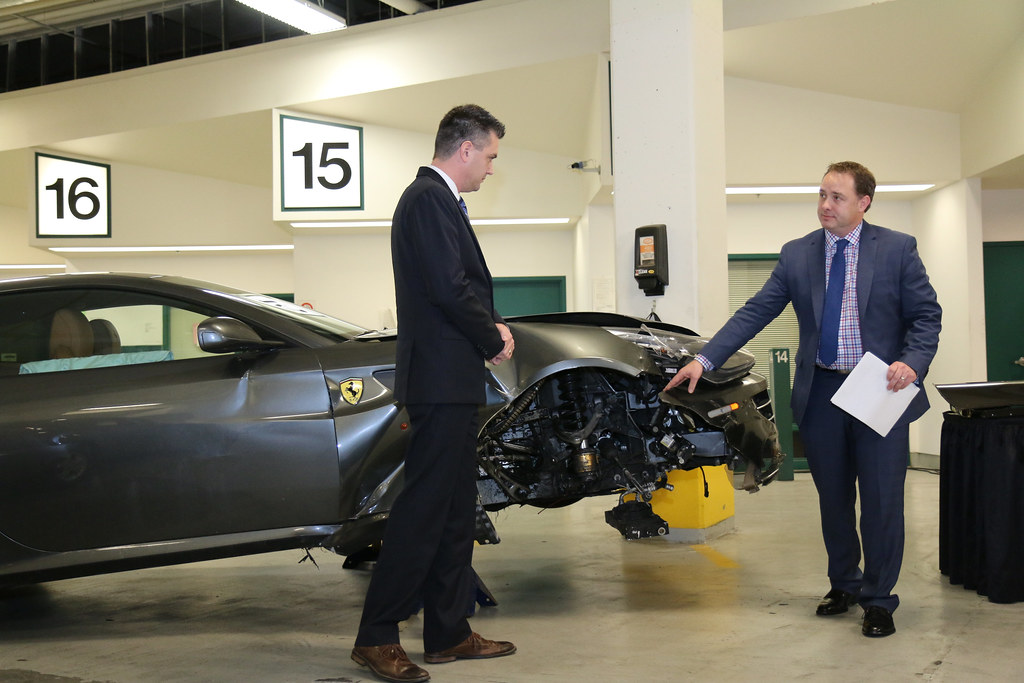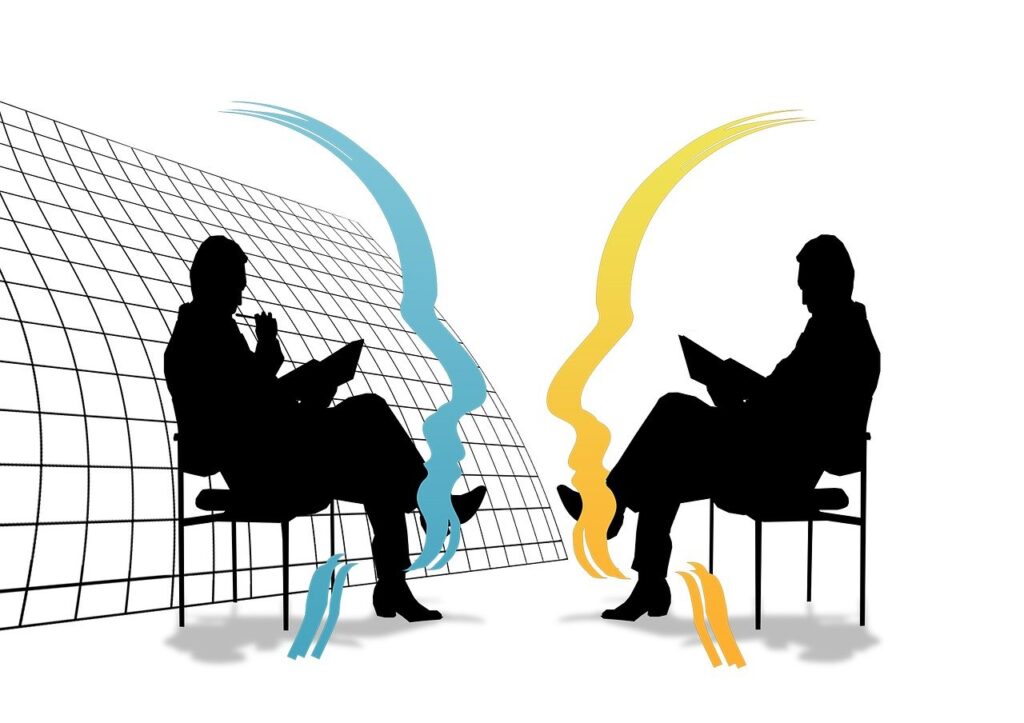
Stepping onto a car dealership lot can feel like entering a lion’s den. The shiny vehicles, the alluring new car smell, and the promise of a fresh start on the road are often overshadowed by the anxiety of negotiating a fair price. It’s a significant financial decision, and for many, it’s one of the most intimidating transactions they’ll ever make.
But what if you could flip the script? What if you walked in not as a bewildered customer, but as a prepared, knowledgeable consumer ready to navigate the complexities of car pricing and secure a deal that truly benefits you? This isn’t just about saving a few bucks; it’s about empowering yourself to make smart choices, especially when considering those appealing (but often overpriced) dealer-installed upgrades and extras that can quickly inflate your total cost.
This comprehensive guide is designed to transform you into a negotiation pro. We’ll demystify the car-buying process, equipping you with actionable strategies to save thousands on your next vehicle purchase and ensure you get maximum value for every dollar, whether it’s on the car itself or the ‘mods’ a dealer might try to tack on. Get ready to learn the secrets to walking away with a deal you’ll be genuinely excited about.

1. **Master Market Value: Your Foundation for Negotiation**Before you even think about talking numbers with a salesperson, your absolute first step must be to understand the market value of the vehicle you desire. This isn’t just a suggestion; it’s the bedrock of your entire negotiation strategy. Knowing this figure provides you with a critical reference point, allowing you to gauge whether any quoted price is genuinely competitive or just a dealer trying their luck. Without this knowledge, you’re effectively negotiating blind, and that’s a losing proposition.
For new cars, resources like Edmunds are invaluable. They offer the “Edmunds Suggested Price,” a recommendation based on an exhaustive analysis of “millions of data points, including supply, demand, incentives, options and recent nearby transactions.” You can find this by looking up your preferred car on Edmunds and checking the “pricing” box near the top of the page. This price will even vary by the specific trim level you select, giving you a precise target.
Used cars, on the other hand, require a slightly different approach due to their unique nature. While Edmunds still provides a price range for make and model listings, it’s always best to focus on a “specific piece of inventory.” For any actual vehicle listed for sale, Edmunds features a detailed price section that rates the price as “great,” “good,” or “fair,” or indicates if it’s a “high price,” along with how much it is above or below the market average. This feature alone is a powerful tool for instantly assessing whether a dealer’s asking price is reasonable.
Remember, Edmunds’ suggested pricing serves as an average. Your ultimate goal is to achieve a price at or even below this benchmark. However, don’t fret if the final price ends up being a little higher; the key is to be informed and confident that you’ve secured the best possible deal under current market conditions. Other excellent resources for assessing value include our car valuation tool from Kelley Blue Book, which gives an estimated average price range, and CarGurus.com, which uses recent market data to label a used car’s list price as too high, average, or a good deal. For used vehicles found elsewhere, Edmunds’ appraisal tool can help you determine what the dealership might have paid for it, allowing you to aim for a price between the “trade-in” and “dealer retail” values.
Read more about: Decoding the Decay: How Rust Destroys Classic Car Value and What Every Enthusiast Must Know

2. **Gather Intelligence: Secure Multiple Price Quotes**Once you’re armed with a solid understanding of market value, your next strategic move is to gather competitive price quotes from several dealerships. This isn’t just about finding the absolute lowest number; it’s about creating leverage and gaining a comprehensive view of what the market is willing to offer for your desired vehicle. Think of it as building your intelligence brief before any serious negotiation begins.
The easiest way to do this is by “calling, emailing or texting a few nearby dealers.” Don’t be shy about reaching out; dealerships expect this kind of inquiry. When you call, always “ask for the internet sales manager.” These individuals are typically more accustomed to direct, price-focused discussions and can often provide a more straightforward quote without the typical showroom theatrics. During this conversation, it’s crucial to “verify that the vehicle is in stock and make sure it has all the options you want” to ensure you’re getting a quote for the exact car.
Alternatively, you can submit your information directly on Edmunds or the dealer’s website, which will also prompt responses from sales teams. Once you start receiving these quotes, don’t forget to utilize tools like the “Edmunds price checker tool for new vehicles.” This allows you to input the details of any quote you’ve received and instantly get a rating – fair, good, or great deal – giving you an objective third-party assessment of the offer’s competitiveness.
The accumulation of multiple, concrete offers from various dealerships will become your most potent weapon. Each quote acts as a benchmark, giving you the power to approach subsequent dealerships with compelling data. This proactive approach strips away much of the dealer’s power and places it firmly in your hands, setting the stage for more effective negotiations down the line.

3. **Choose Your Negotiation Path: From Passive to Proactive**Negotiating a car price doesn’t have a one-size-fits-all approach. Depending on your comfort level, time availability, and how aggressively you want to pursue the absolute lowest price, you can choose from a spectrum of strategies. The important thing is to understand these paths and select the one that aligns best with your personal style, while still ensuring you get a fair shake.
The simplest route, often called “Strategy A: The path of least resistance,” is perfect if you’re not keen on the back-and-forth of haggling but still want a decent deal. Here, you simply gather multiple quotes (as discussed in step 2) and “take the lowest offer and move forward on it.” In this scenario, you’re “not really ‘negotiating,’ per se, but instead letting the dealerships do the work for you.” There are indeed times when a dealership presents its “best price” upfront, rendering further haggling unnecessary and saving you time and energy.
For those willing to engage a bit more, “Strategy B: Negotiating with offers,” is a powerful intermediate step. Imagine “dealership X offered you a better price, but dealership Y is closer to home.” An effective negotiation tactic is to contact dealer Y and inquire if they are willing to “match or improve the price you were quoted from dealer X.” Be prepared to provide proof of the offer if they request it. This strategy leverages competition directly and can often result in a better deal from your preferred dealer without extensive confrontation.
Finally, if you’re inclined to push for the absolute best deal, you’ll need to embrace “Strategy C: Classic negotiation.” This is where the art of the deal truly comes alive. It requires a careful approach, as “salespeople are trained professionals.” The key isn’t just demanding a lower price; it’s about “justify[ing] the discount with data rather than simply because you want a bigger discount.” When a salesperson typically opens with, “What monthly payment would comfortably fit into your budget?”, it’s crucial to “sidestep this question” and insist on discussing the purchase price of the car first, telling them you’ll address financing later. This keeps the focus where it belongs: on the overall cost of the vehicle, not obscured monthly figures.
Once the salesperson presents their initial offer, which you might find unappealing, the real negotiation begins. A strong response could be: “I’ve done a lot of research on the market value of this vehicle and have a good idea of what it sells for because we’ve shopped around a bit. If you can beat this price (here’s where you present your best price quote printout from another dealership), we will have a deal.” This not only signals that you’re an informed buyer, justifying your request with context, but also immediately prompts the salesperson to dig deeper into the dealership’s pricing structure, as they know they have other offers to beat. This assertive yet data-driven approach is effective for both new and used car purchases.
4. **Decoding the Dealer: Understanding Car Pricing Terms**To truly negotiate like a pro, you need to speak the language of the dealership. The world of car pricing is riddled with terms that can be confusing, but understanding them is crucial to discerning a good deal from a mediocre one. Familiarizing yourself with MSRP, sticker price, invoice price, and market price will give you a significant advantage, allowing you to cut through the jargon and focus on what really matters.
First, there’s the “MSRP,” or Manufacturer’s Suggested Retail Price. This is what the automaker believes the dealership should sell a new car for. However, it’s vital to remember that dealerships and carmakers are distinct entities—”Mazda salespeople are not Mazda employees”—so they are not legally bound to sell at the MSRP. It’s merely a suggestion, a starting point.
Closely related is the “Sticker price,” which is literally “the bottom line price listed on a new car’s window sticker.” In an ideal world, this should match the MSRP. However, some dealers engage in “market adjustments,” adding to the MSRP and listing a higher-than-suggested sticker price. This phenomenon typically occurs with “rare, in-demand vehicles,” though the context notes that during the COVID pandemic, with its dramatic impact on supply chains, dealers even applied market adjustments to everyday cars like Toyota Corollas. Always check if the sticker price reflects any such markups.
Then we have the “Invoice price,” which is theoretically “what the dealer pays the manufacturer for the car.” If, for instance, a car’s invoice price is $30,000 and the MSRP is $33,000, the intention is for the dealer to pocket around $3,000 in profit, before accounting for operating costs. In practice, the true cost to the dealer is often more opaque. Manufacturers frequently offer additional discounts and rebates based on sales volume. This is why you might hear of cars “selling ‘below invoice'”; it could be that the dealer needed to offload a car at a loss, or more commonly, they acquired it for less than the official invoice price and are still turning a profit.
Of all these terms, the “Market price” is arguably “the most important.” This figure represents “what consumers are paying, on average, for the car.” Typically, buyers are paying somewhere between the invoice price and the MSRP. Dealerships invest heavily in databases that provide them with real-time data on how quickly each model is selling in your region and across the country. This data dictates their pricing flexibility: “When sales are brisk, the dealer will hold the line on pricing. When sales are slow, you have more opportunity to win concessions.” Your ability to reference this market price, derived from your own thorough research, underscores your informed position and empowers you to negotiate effectively.
5. **Mastering the Used Car Negotiation: Tailored Strategies**Negotiating for a used car presents a unique set of challenges compared to buying new, primarily because “apples-to-apples comparisons aren’t always possible.” Each used vehicle has its own history, mileage, condition, and specific options, making it harder to find exact duplicates for price comparisons. However, with the right strategy and tools, you can still secure an outstanding deal. Your overarching goal in this scenario is to “make an offer that is as low as possible but still in the ballpark” of what’s reasonable.
To achieve this, leveraging the right resources is critical. If you found the vehicle on Edmunds’ inventory pages, you already have a head start, as the price section will indicate if it’s a “fair, good or even great deal.” If your search originated elsewhere, head to an appraisal tool like Edmunds’ and be prepared to “answer a number of questions about its trim, options and condition level.” This will generate an “Edmunds Appraisal Report,” giving you a “rough idea of what the dealership might have paid for the vehicle.” You can then “compare the ‘trade-in’ price to its estimated ‘dealer retail’ value on Edmunds,” aiming to “land in between those numbers” for your offer.
Another powerful tactic is to actively “look for comparable used vehicles near you to see what others are listing them for.” It’s absolutely crucial to ensure that “the miles and options are similar,” otherwise, your comparison won’t be valid. Once you’ve meticulously done this research, you’ll have a much clearer understanding of what constitutes a truly fair price for that specific used car. This diligent homework builds your confidence and provides the data you need to justify your offer.
When you’re ready to make an offer, especially if you’re the first to propose a figure, “give yourself room for the dealership to make a counteroffer.” For example, if a vehicle is listed for $30,000 and your research places a “great deal” around $27,500, consider starting your offer at $27,000. This leaves you space to negotiate upwards while still landing within your desired range. It’s imperative to “know ahead of time what your opening offer will be, how you will counter the dealer’s offer, and what your highest price will be.” This level of preparation ensures that “when you’re in the heat of the moment, you won’t get flustered,” allowing you to “negotiate like a pro,” even if the salesperson counters at a price like $28,500, which, while higher than your initial bid, is still below their original asking price. Many buyers are reluctant to make a low offer, fearing ridicule, but remember, the salesperson starts high, so you should start low.
Read more about: Mastering the Road Ahead: 10 Essential Lawyer Strategies for Contesting Speeding Tickets in Court
6. **The Golden Rule: Focus on Total Price, Not Monthly Payments**This is perhaps the most critical piece of advice in the entire car-buying journey: always, always focus on the “out-the-door” (OTD) price of the car, not the monthly payment. Dealerships masterfully use monthly payments to obscure the true cost of the vehicle and manipulate the deal. Their goal is often to make it “look like they’re giving you price concessions when, actually, they are simply lowering your monthly payment by extending the loan term or reducing an already-inflated interest rate.” This sleight of hand can add thousands to your total cost without you even realizing it.
When a salesperson attempts to steer the conversation towards monthly payments, politely but firmly “ask to see the purchase price and discuss adjustments to that figure.” Make it clear that financing will be discussed separately, later in the process. If a salesperson “balks or outright refuses” this request, consider it a significant red flag and “a sign to take your business somewhere else.” You are in control, and you have the right to a transparent negotiation.
The “out-the-door” (OTD) price encompasses everything you will pay, including the vehicle’s selling price, taxes, state fees, and all those extra charges dealers love to tack on. These often include “bogus fees (‘documentation fees’)” and “overpriced and dubiously valuable extras like window etching or protective coatings for hundreds of extra dollars.” Understand this: “ALL of it is negotiable.” While they might claim certain fees “absolutely cannot remove[d],” if they genuinely want to sell you the car and you stand firm, they will find a way to discount the price further, either by reducing the fee or lowering the car’s sticker price.
Even if you plan to pay cash, the principle remains the same. “Paying with cash doesn’t automatically mean the dealer will give you a killer deal”; in fact, dealers often “prefer you finance the car so it could make a little profit from securing the loan.” However, paying cash (or acting as if you are with preapproved financing) does simplify the process by allowing you to demand the “out-the-door price” and avoid getting entangled in discussions about interest rates and loan terms prematurely. Getting “preapproved from a bank or credit union before visiting the car dealership” is a smart move, as it effectively puts you in the position of a cash buyer. This empowers you to “concentrate on the price of the car and avoid getting lost in confusing financing details,” ensuring that every negotiation centers on the actual value of the vehicle and any dealer-installed modifications. This single focus will save you countless dollars and much frustration.
Stepping into the second phase of your car-buying journey, it’s time to move beyond the foundational research and equip yourself with advanced tactics. While knowing the market value and securing quotes are crucial, the true mastery of negotiation lies in anticipating dealer strategies and confidently navigating the less obvious aspects of the deal. This section will empower you to outmaneuver sales tactics, optimize your trade-in, orchestrate a bidding war, shrewdly decline unnecessary extras, finance intelligently, and, most importantly, know when to confidently walk away. These are the tools that will finalize your path to securing not just a good deal, but the best possible deal on your new vehicle and any desired modifications.
Read more about: 13 Smart DIY Car Upgrades That Can Skyrocket Your Trade-In Value by Thousands

7. **Outsmarting Sales Tactics: Turn the Tables on the Dealership**Car salespeople are highly trained professionals, often employing a suite of psychological tactics designed to steer the negotiation in their favor. Their ultimate goal is to make a sale today, and they know that in-person interaction fosters an emotional connection with the vehicle, which can override rational decision-making. Awareness of these common ploys is your first line of defense, allowing you to recognize them and respond strategically rather than react impulsively.
One pervasive tactic is the insistence on in-person visits and the reluctance to discuss pricing remotely. Dealers prefer you to come to the lot because it allows them to apply more pressure; it’s harder to disengage when you’re physically present, admiring the car, and feeling the “new car smell.” They might refuse to provide an “out-the-door” price over the phone, attempting to smooth-talk you into an “appointment.” Your counter-strategy here is firm politeness: insist on receiving the OTD price remotely, clearly stating you’ll take your business elsewhere if they can’t provide it. You can even use the prospect of your visit as leverage, agreeing to come only after a price has been agreed upon, as some savvy buyers have successfully done, completing the entire transaction remotely.
Another classic and often tiresome trick is the “I have to ask my manager” routine. Dealerships are structured so that only managers possess the authority to finalize prices, leading to repetitive trips between your desk and the manager’s office. This tactic isn’t just about seeking approval; it’s designed to wear down your patience, making you more amenable to concessions as the minutes tick by. Understanding this, you can employ a bit of reverse psychology yourself by creating a similar, if fictional, external authority figure—a spouse or parent you “need to consult”—to relieve pressure and buy yourself time to cool down and consider your next move. This subtle maneuver helps equalize the playing field, making them wait while you maintain composure.

8. **Strategic Trade-Ins: Maximize Value, Avoid Manipulation**The decision to trade in your old car at the dealership, while convenient, often means leaving money on the table compared to a private sale. However, if the convenience outweighs the potential extra cash, a strategic approach is vital. The first step, as with the new car, is diligent research. Utilize resources like Kelley Blue Book (KBB) and NADA values to get a precise understanding of your used car’s worth as a trade-in. Dealers can offer vastly different amounts, so knowing your car’s true value is a non-negotiable part of the process.
A critical trap to avoid is allowing the dealer to “bake in” the value of your trade-in into the purchase price of the new car. Just as they obscure the true price by focusing on monthly payments, they’ll often bundle the trade-in and new car price to manipulate figures. They might undervalue your trade-in while making it seem like they’re offering a significant discount on the new car, or vice versa. To prevent this, always insist on separate, distinct quotes for your trade-in and the new vehicle’s purchase price. This transparency ensures you can assess both components of the deal fairly.
When to introduce the trade-in is another tactical consideration. Dealerships will almost certainly ask if you have a trade-in early in the conversation. A common trick is to demur, saying you haven’t decided or plan to keep your old car as a “beater.” Then, once the price for the new car is firmly negotiated, you can “suddenly decide” to trade it in after all. This strategy, likened to asking for double chicken at Chipotle only after your first scoop, prevents the dealer from influencing the new car’s price based on your trade-in, ensuring both negotiations are clean and independent.
While this tactic might “piss off your salesperson,” the goal is to secure the best deal, not to make friends. As long as you maintain distinct negotiations for both the new car’s price and your trade-in’s value, the outcome should ultimately be the same: a deal where you understand and maximize both sides of the transaction, rather than being caught in a confusing, bundled offer that disguises the true costs.

9. **Force a Bidding War: Let Dealerships Compete for Your Business**Once you’ve meticulously researched and pinpointed the exact make, model, year, and trim of the vehicle you desire, it’s time to leverage competition. Websites like Cars.com, CarGurus, and AutoTrader are invaluable for locating nearby dealers stocking your preferred car. Crucially, make a note of each car’s unique stock number; this signals your intelligence and saves time, demonstrating you’re a serious and informed buyer, not one easily swayed.
The next step is to initiate a bidding war, transforming the negotiation into a clear competition among dealerships. Begin by contacting one dealer and obtaining their “out-the-door” (OTD) price for the car. Then, armed with this figure, reach out to a second dealer, present the offer from the first, and directly ask if they can beat it. This process continues, using each subsequent dealer’s best offer as leverage to push for an even lower price from the next, effectively creating a cascade of competitive bids. This systematic approach ensures you’re constantly pushing the market for the lowest possible price.
This method is remarkably effective for several compelling reasons. Firstly, it allows you to pre-negotiate the best possible price remotely, typically over the phone or email, which means by the time you step into a showroom, the price is largely set, saving you hours of frustrating back-and-forth. Secondly, it strips away many of the manipulative tactics dealers typically employ, as they understand they are in a direct price competition. Most importantly, it can save you thousands of dollars, ensuring you get the most value for your investment. For buyers less concerned with a specific color or minor options, the “one-email trick”—sending a single email to multiple dealers requesting their best OTD price—can yield similar results, streamlining the process even further.

10. **Just Say ‘No’ to Extras: Avoiding Overpriced Dealer Add-ons**Dealerships often attempt to inflate their profits by pushing “recommended extras” or “dealer add-ons” – items not originally included with the vehicle but installed by the dealer. These can range from protective coatings to gap insurance, and they are almost universally overpriced and frequently offer dubious value. Many buyers, for instance, never even use their extended warranties, and those who do often find the cost of the warranty outweighs the repairs it covers, as Consumer Reports has highlighted.
Consider common dealer-installed extras and their exorbitant markups. Window tinting that might cost $150 at a specialty shop can be billed at $495 by the dealer. A ceramic coating that a detail shop offers for $500 could be priced at over $2,000 at the dealership. Even seemingly minor items like nitrogen-filled tires, often free at places like Costco, are sold for $100. Similarly, a tow hitch installation, which could be done for $147 with an eBay purchase, might cost $695 at the dealer. All these add-ons contribute significantly to the car’s bottom-line cost, and it’s crucial to remember that “ALL of it is negotiable,” despite dealer claims that certain fees “absolutely cannot remove[d].”
Extended warranties are another area ripe for scrutiny. Instead of opting for an overpriced dealer warranty, focus on buying a reliable car with a robust factory warranty and committing to proper maintenance. The rare exception might be a high-end European car known for expensive repairs if you plan to keep it for many years; even then, the warranty’s price is negotiable, and it doesn’t need to be purchased at the point of sale. You often have a year to buy one, and independent dealerships often sell them at much better prices.
Finally, gap insurance is a product dealers often push, especially for financed cars. It covers the difference between what you owe on a totaled car and what your insurer pays out. While valuable, dealership gap insurance is typically “grossly overpriced.” Instead, inquire with your own auto insurer for their equivalent, sometimes called “new car replacement,” which will likely offer better value. By being vigilant and saying ‘no’ to these inflated extras, you protect your budget and ensure every dollar spent genuinely contributes to the value of your vehicle.

11. **Smart Financing Strategies: Reduce Loan Costs, Maximize Savings**The interest accrued on an auto loan can significantly inflate the total cost of your vehicle, potentially adding thousands of dollars over the loan’s duration. For example, a $30,000, 5-year loan at a typical 7% interest rate in 2024 could result in over $5,600 in interest payments, adding nearly 20% to the car’s overall price. Therefore, intelligent financing is a cornerstone of saving money, and your primary goal should be to minimize interest costs.
A crucial step is to get preapproved for an auto loan from a bank or credit union *before* you even set foot in a dealership. This provides you with a clear understanding of the best available interest rates, giving you a benchmark against which to compare any offers from the dealer. Preapproval also effectively puts you in the position of a cash buyer, simplifying negotiations by allowing you to focus solely on the car’s price rather than getting entangled in complex financing details and confusing monthly payment discussions.
While paying with cash simplifies the transaction and eliminates interest, it doesn’t automatically guarantee a “killer deal.” Dealers often prefer you to finance through them, as they can earn a profit from securing the loan. However, having preapproved financing empowers you to concentrate on the “out-the-door price” of the car itself, ensuring that any dealer-offered financing is genuinely competitive. This focus allows you to avoid the “monthly payment trap” that dealerships use to obscure the actual cost of the vehicle by extending loan terms or adjusting interest rates.
Be wary of lengthy loan repayment periods, such as 72-month terms or longer, which are increasingly common. These extended terms significantly increase the total interest paid and can leave you “upside down”—owing more than the car is worth—due to rapid depreciation, especially if you trade it in prematurely. To keep costs down, aim for shorter loan terms (e.g., 3-4 years is better than 5-6), make a substantial down payment, and avoid financing sales tax or other extras. These disciplined financial choices are critical to truly optimizing your car purchase.
Read more about: Behind the Billions: Unpacking the Marvel Cinematic Universe’s Complex Financial Journey and Strategic Budget Shifts

12. **The Power to Walk Away: Your Ultimate Negotiation Leverage**The single most potent tool in any car negotiation is your unwavering willingness to walk away from a deal that doesn’t meet your expectations. Buying a car, despite the emotional appeals dealers try to evoke, is fundamentally a business transaction. Detaching your emotions from the process and maintaining objectivity is paramount, ensuring you make a rational decision based on value, not sentiment.
It’s absolutely essential to avoid becoming emotionally attached to a specific vehicle. While it’s natural to desire a particular car, having a backup plan and the mental fortitude to consider alternatives provides critical leverage. If you enter negotiations without needing a car immediately, you gain a significant advantage, as you have the time and ability to step away if the terms aren’t favorable. This patience counters the dealer’s pressure tactics, which often rely on creating a sense of urgency.
Given that automobile production has largely returned to pre-pandemic levels, it’s highly probable that the model and trim you’re looking for can be found at another nearby dealership. This reality underpins your power to walk away; you’re not sacrificing your desired car, merely taking your business to a seller more willing to meet your price. Don’t be afraid that a salesperson will laugh at you for a low offer; they start high, so you should start low. Your thorough research should instill confidence in recognizing a fair price and knowing when to counter, or when to simply leave.
Ultimately, if the deal isn’t right, if you feel pressured, or if the numbers simply don’t align with your diligent research and budget, remember that you control the transaction. Walking away is not a failure; it’s a strategic move that protects your financial interests and ensures you don’t settle for less than you deserve. This final piece of advice encapsulates the essence of being a savvy car buyer: empowered, prepared, and always in control.
Read more about: Oops! 10 Cars Drivers Confess They Wish They Could ‘Unpurchase’ – And How You Can Avoid Their Regrets
Armed with these comprehensive strategies—from mastering market values to skillfully navigating financing and understanding the invaluable power of walking away—you are now fully equipped to approach any car purchase with confidence. No longer a novice, you’ve transformed into a negotiation pro, ready to demystify dealership tactics and secure a deal that truly aligns with your budget and desires. Go forth, negotiate wisely, and enjoy the satisfaction of a purchase made on your terms.






